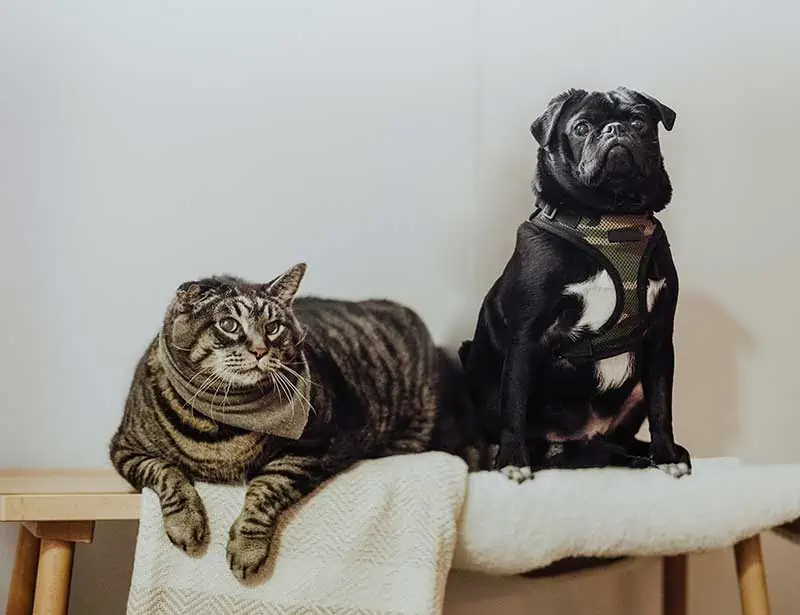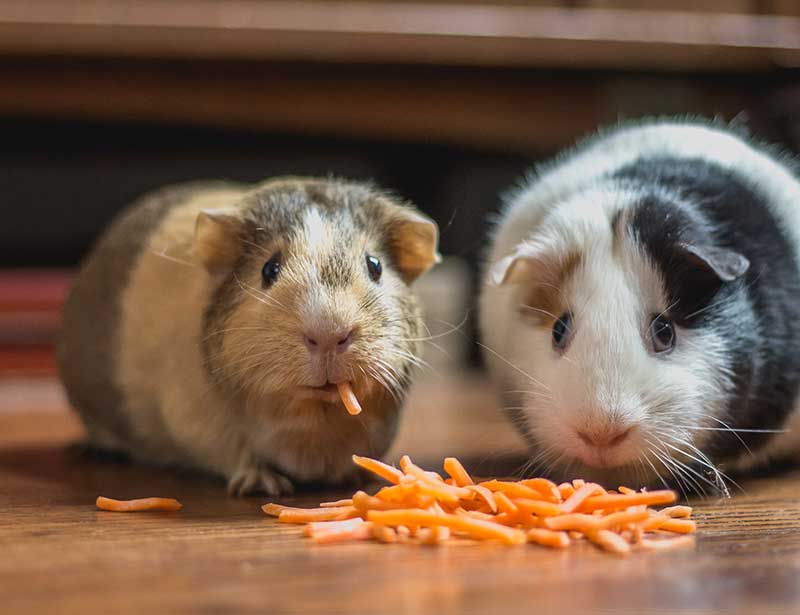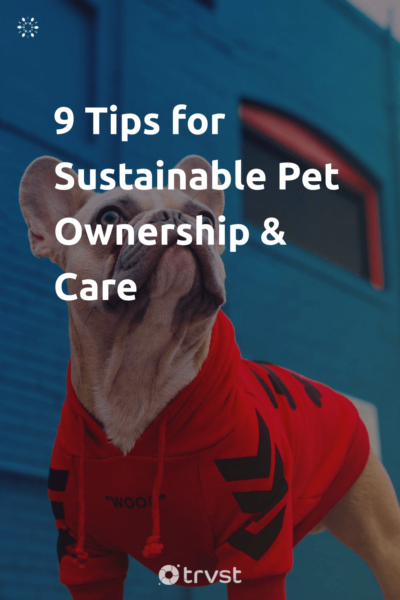9 Tips for Sustainable Pet Ownership & Care
Do you wonder how to meet your pet's needs without compromising the environment's health? As a pet owner pursuing a sustainable life, it’s also important to consider your pet’s carbon pawprint. Apart from humans, pets also have a significant environmental impact. As such, towards a healthier planet, more than a passing thought towards sustainable pet ownership can help pet lovers support a sustainable lifestyle.
Are Pets Sustainable?

What You Need to Know as a Pet Parent
As cuddly as our furry friends are, they play a part in environmental change. Pet waste, plastic poop bags, and plastic pet toys all have a negative impact on the environment.
Also, cats and dogs are carnivores. As a result, they primarily eat meat. Animal rearing, meat production, and supply chains contribute to greenhouse gas emissions, contributing to climate change.
Various strategies and tips exist to ensure that your pet has a low carbon footprint. Low-impact pet ownership entails using eco-friendly pet products down to the way you handle dog and cat waste. Pet dogs are said to contribute about 7% of the yearly environmental change effects of the average European Union resident3.
What’s more, we have a lot of pets! From the 2019-2020 National Pet Owners Survey that the American Pet Products Association (APPA) conducted, 67% of households own pets. That translates to about 85 million households in the United States alone2. In the UK, about 51% of adults own a pet4. Additionally, dogs and cats top the list of the most popular pets5.
It’s clear that the pet industry needs to subscribe to eco-friendly practices. As pet parents, apart from patronizing eco-friendly pet companies, we’ve selected 9 of the best tips to raise an eco-pet below.
A Guide to Sustainable Pet Ownership - 9 Tips
1. Avoid Overbuying Pet Products
As a pet parent, it’s only normal that you’d want your pet to have all the best products. Of course, because they essentially become part of the family. Whether this is related to pet toys, pet food, or cat and dog beds, humans tend to want to provide the best for our animal friends at home.
However, overbuying individual items leads to a major environmental challenge, as many goodies generate waste. As we know, waste causes pollution to the environment, which can go on to affect general health and well-being.
Even when buying from eco-friendly pet product companies, it’s important to be mindful of the items your pet actually needs. Alternatively, you can buy the necessary items in bulk, reducing packaging and carbon emissions from driving to the store, and it can help you save money. Ultimately, it decreases the number of trips you make to buy supplies.
To support an eco-friendly lifestyle, it’s vital to curb waste. If you’re someone who purchases impulsively, it’ll help create a shopping list before going out for pet supplies. This is one of the ways to curb overbuying and overspending and, therefore, reduce waste.
If you’re on a zero-waste journey, this tip will also guide you. This way, you and your pets will be a step closer to significantly reducing your environmental footprint.
Check out our guide to sustainable pet products for eco-friendly options.
2. Get Rid of Waste Properly
Cat and dog waste significantly contribute to a negative impact on the environment. As pet parents, it becomes necessary to properly dispose of this waste. Although you may think leaving the feces of your furry friends behind is natural, it poses challenges.
Pet waste contains harmful bacteria that can end up causing health problems if left in the natural environment. The primary culprit here is the possibility it can leak into the groundwater supply.
Also, rainwater can wash the waste into lakes or streams, contaminating them. A more obvious reason to properly dispose of pets’ feces is that it causes environmental odor problems.
If you’re a cat owner, paying attention to the type of cat litter you purchase is important. This is because some litter companies use harmful ingredients that affect animals and humans.
Besides the environmental effects, eco-friendly cat litter reduces odor and saves clean-up time. For your cat, use litter containing materials that you can compost and will biodegrade. Brands are now making natural cat litter from materials like corn, dried wood, wheat, and newspapers.
With dog waste as well, it can easily be washed into water bodies, causing harm. Although some people believe in flushing dog feces, there’s the possibility that the microorganisms can end up in water bodies.
This is why one of the best eco-friendly options is to use compostable or biodegradable poop bags. This goes for both dogs and cats. Unlike plastic bags, these bags can easily decompose, which is toxic to the planet.
Compostable Poop Bags and Cat Litter
This brand offers compostable dog feces bags made from corn starch. They have unscented green and rose-scented bags to choose from. Unlike plastic bags, these ones are biodegradable and compostable, leaving zero waste.
This brand provides unscented paper cat litter with a moisture-locking feature. The product is made with 100% post-consumer paper from recycling centers.
3. Choose Eco-Friendly Pet Food
The diet of cats, dogs, and your pets, in general, is another aspect to examine when switching to sustainable care. One of the key ways to reduce your environmental footprint and that of your pet is to consider the food your pet consumes.
Since cats and dogs are carnivores, they consume huge portions of meat. On the downside, processing these types of pet foods contributes to greenhouse gas emissions.
People and studies have revealed that meat production and its supply chain contribute to greenhouse gas emissions1. Such gases contribute to the global warming effect on the planet. Apart from this, you may also find unethical practices behind the harvesting process of pet food.
As a result, it is worth considering evaluating your pet’s food supply, including the pet food companies you patronize.
To promote more sustainable pet care, we advise that owners of pets and animals become knowledgeable about the source of pet food. Doing so will aid you in ensuring that the origin adheres to sustainable and ethical practices, forearmed with the information you need to make sustainable pet food choices.
For example, many premium pet foods are likely to display information on their sustainability transparently whereas others may not.
If you’re thinking of making pet food at home, it’s important to check with your pet’s veterinarian. Forearmed with the correct information and a nod from the vet, homemade pet food is an excellent way to adhere to eco-friendly practices.
Consider shopping from local stores when buying dog or cat food ingredients. If you buy packaged food or pet treats, ensure the packaging is eco-friendly. Also, you must avoid overfeeding animals to prevent health issues like pet obesity.

4. Don’t Overfeed Your Pet
As simple as it may sound, this tip is relevant to caring for your pets sustainably. First, there are health challenges caused by overfeeding. Overfeeding can lead to pet obesity, which can cause further problems such as diabetes. These complications will put your pets in an uncomfortable and risky position.
Just like in humans, these conditions can be life-threatening. So, rather than feeding your pets more than their bodies need, only serve them up just what they need. In the long run, this also helps you save money.
Whether this is money spent on supplies or possible medical bills to reduce the damages of obesity, you can also consult the veterinarian concerning diet requirements and portions.
Concerning the environmental effects, overfeeding means more purchases, accumulating more packaging supplies, and a higher environmental footprint.
Also, more people overfeeding causes a greater demand from meat producers. So, you can see the long chain of ecological effects overfeeding causes.
5. Use Natural Cleaning Supplies
We can’t necessarily control the mess animals and pets make. However, we can intentionally choose how we clean up. Whether it’s vomit or pee, these furry friends can sometimes make a lot of mess.
Instead of using harsh chemicals to clean up, why not consider natural zero-waste cleaning supplies? Toxic ingredients can seep into your carpets, sofas, and other furniture. If pets take these in, it can affect their health. Not only this, but the tissue papers you use to clean with these chemicals can end up in the natural environment.
Some of the store-bought cleaning products contain a lot of toxic chemicals and materials. Also, they can prove pretty costly. One of the best tips is to use products within the home to avoid these chemicals. People use items like lemon, vinegar, and baking soda as cleaning agents free of chemicals and toxic materials.
Desisting from using such chemicals also contributes to sustainable living and is easy to use and safe for the entire family. So when your dogs next make a mess, consider using household mixtures as cleaning agents for sustainable pet care.
6. Get Creative with Toys and Accessories
Many toys, bowls, accessories, and beds are made of synthetic materials. Many times, for instance, dogs will chew up their toys till they’re useless. People will then throw out these plastics, which do not decompose.
To support your sustainable lifestyle, there are tips to avoid this. If you’re feeling creative, one of the useful tips is creating DIY accessories for your pets. You can even create cardboard boxes as fun play areas for your dogs or cats. This option is one of the many tips to prevent the accumulation of plastic within the home. As we know, plastic opposes a sustainable lifestyle.
On the other hand, you can also decide to purchase toys and accessories made from recycled or repurposed pieces. Plastics and synthetic pieces end up in landfills and oceans. The product itself and the chemicals used to make it go on to affect land and aquatic life.
By choosing sustainable pet products, you’re making a conscious choice to protect the people and the planet. In cases where your pet no longer wants a particular item, you can donate it to an animal shelter. This prevents it from ending up as a pollutant.
Environmentally-Friendly Pet Toy Brands
Several brands create sustainable accessories for pets. We’ve highlighted two below.
Harry Baker creates accessories with the people, planet, and pets in mind. The brand uses sustainable and recycled pieces to make its products. Harry Baker sells bowls, toy storage, loungers, and leashes.
This brand creates and sells non-toxic and latex-free toys for dogs. West Paw offers chewable designs that are also recyclable.
7. Rescue or Adopt from a Local Shelter
Adopting may not jump out as sustainable at first, but there are many sustainable benefits when you examine it. Apart from saving money you’d otherwise spend in a store, you’ll also be helping to reduce the number of stray animals.
Regarding environmental effects, many stores and people tend to transport animals from various locations. By adopting from a local shelter or rescuing, you’ll be reducing your ecological footprint because transportation contributes to the release of toxic gases into the atmosphere.
Apart from the transportation issue, there’s also the risk of diseases. The Centers for Disease Control and Prevention (CDC) highlights the risks of importing dogs from a country or countries with high rabies cases.
By adopting, you’ll also be limiting the possibility of indirectly supporting unethical breeding techniques. For instance, puppy mills breed dogs in poor conditions for commercial purposes. Their cages are often overcrowded, and they are denied healthy dietary requirements and clean water. The facilities then sell these pets in stores for profit.
People may not know where these furry friends come from, thereby indirectly supporting this industry. The best option in such cases is adoption within the country.
8. Groom Your Pets Regularly
Regularly grooming your pets will help to prevent fleas and ticks as part of your sustainable pet care routine. This process also entails washing their beds to ensure they’re sleeping in clean places. In this light, it’s important to use non-toxic shampoos and soaps. These not only prevent fleas but also prevent harmful chemicals from seeping into the water drains.
Chemical-filled soaps and shampoos can irritate an animal’s skin and can also be harsh on its hair. Therefore, using natural soaps and shampoos is best. This way, bath time is both a clean and eco-friendly process.
When people groom their pets regularly, this helps to reduce the need for flea and tick treatments. Frequently, these treatments and sprays are heavily chemical-based. Not only do they affect pet health, but they also affect human well-being. Many of these pest-control sprays contain harsh ingredients linked to respiratory problems and cancer.
To prevent this, regular baths and combing of animal fur become necessary. This prevents the need for chemical sprays and maintains your pet's health. Additionally, vacuum and clean the areas where your pets stay or play often. This provides clean places for them to play and reduces the chances of flea infestations.
9. Review Your Routines
Sustainability in its various forms requires necessary lifestyle changes. Right from our individual choices, we can make a difference. When it comes to pet care, it’s also important to regularly review your routines. These include feeding routines, grooming routines, and even play routines.
Taking some time out to examine these helps you identify areas where you can be more sustainable. This will also help you think of eco-alternatives and zero-waste swaps for many accessories within the home.
For instance, swapping plastics for eco-friendly accessories and chemicals for non-toxic cleaning agents. Through this regular review process, you’ll notice how processes become more streamlined and less stressful.
Examining walk routines involves taking walks instead of driving. For instance, dog walks are normal; however, you can also take walks when you need to go to the store. This helps you reduce the number of toxic emissions your vehicle releases into the atmosphere.
As a result, it helps to decrease your and your pet’s carbon footprint. Walking is also healthy and keeps your pets happy.
Sustainable Pet Ownership
There are many ways to care for your pets and become a more sustainable pet owner. We’ve provided the tips in this article as a way to guide you.
Pursuing a sustainable lifestyle while having a furry friend at home doesn’t have to be an impossible journey. Acknowledging the environmental effects is the first step. Making the necessary lifestyle changes then comes next.
| 1 | Schroeder, Roberto & Aguiar, Luis & Baines, R.N.. (2012). Carbon Footprint in Meat Production and Supply Chains. J. Food Sci. Eng.. 2. 652-665. 10.17265/2159-5828/2012.11.005. |
| 2 | American Pet Products Association (APPA). (2020). Pet Industry Market Size, Trends & Ownership Statistics |
| 3 | Yavor, K. M., Lehmann, A., & Finkbeiner, M. (2020). Environmental Impacts of a Pet Dog: An LCA Case Study. Sustainability, 12(8), 3394. |
| 4 | People’s Dispensary for Sick Animals (PDSA). (2020). PDSA Animal Wellbeing Report 2020. [PDF] |
| 5 | American Veterinary Medical Association (AVMA). (2018). U.S. Pet Ownership Statistics |
Jen’s a passionate environmentalist and sustainability expert. With a science degree from Babcock University Jen loves applying her research skills to craft editorial that connects with our global changemaker and readership audiences centered around topics including zero waste, sustainability, climate change, and biodiversity.
Elsewhere Jen’s interests include the role that future technology and data have in helping us solve some of the planet’s biggest challenges.





